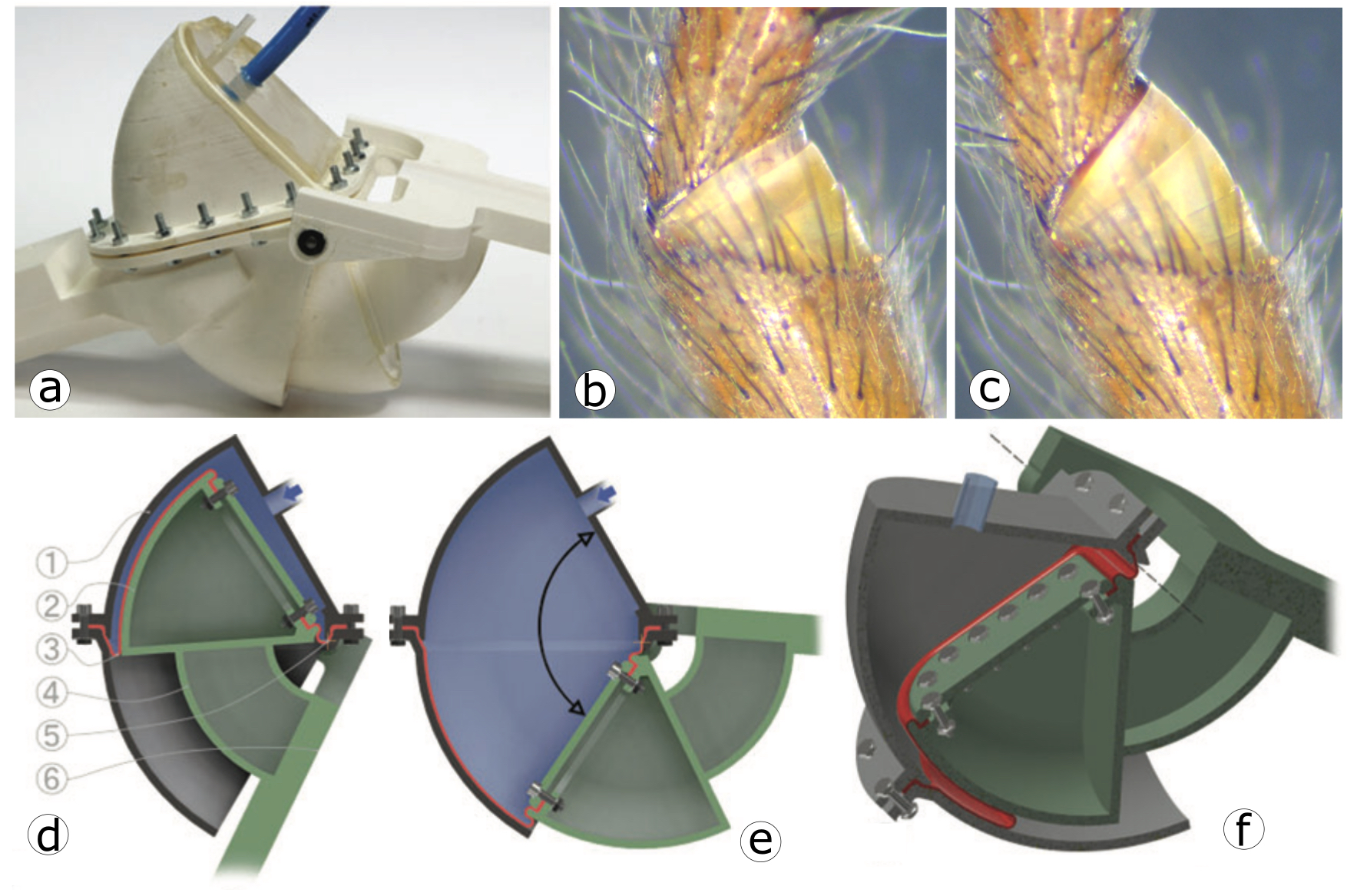
Figure shows a) rotary rolling diaphragm actuator, b) flexed spider joint with membrane, c) extended spider joint - five membrane segments are visible, d) RRD actuator joint flexed, e) RRD actuator extended by internal fluid pressure, and f) RRD joint in perspective view. The diaphragm is shown in red, the fluid space in blue. The prototype was 3d printed, and can be built MRI compatible.
Fluidic actuation evolved in animals and plants. We are fascinated by the membrane structure found in the femur–patella, and tibia–metatarsus joints of spiders [ ]. These joints are hypothesized to open hydraulically by pressurized blood (hemolymph). The joint's arthrodial or articular membrane is potentially formed from a single, folded membrane transferring energy from fluid pressure into joint extension torque.
Standard engineered fluid actuators typically mount o-rings between moving parts, as friction seals. These actuators work at good efficiency at high pressure. However, at low working pressure or at low speed, the seal's Coulomb friction and stiction are significant, cause inefficient actuation, and require dedicated control. Alternatively, telescopic diaphragm actuators with high efficiency and linear force characteristics exist, but only for linear actuation.
Inspired by the spiders' arthrodial joint membrane, we hypothesized that spiders might apply a rotary implementation of diaphragm-fluid actuation. Our engineered rotary rolling fluidic diaphragm is custom-designed from a silicone rubber reinforced fabric with anisotropic tensile characteristics. The diaphragm follows the actuator’s toroidal shape to unroll smoothly.
The rotary fluidic actuator outputs a constant torque throughout its stroke. In comparison, monolithic rotary soft robot actuators show a change in torque over output angle. Stiction and Coulomb friction is avoided by design; the rotary diaphragm seal is rolling during the actuator's stroke. The rotary rolling diaphragm actuator is compact with a low mechanical complexity from a single actuator chamber.
Our implementation outputs 6 Nm torque at a working pressure of 50 kPa (0.5 bar), with a working angle range of 100 degrees. The rotary rolling diaphragm shows a 95% mechanical efficiency, compared to seal-type fluidic actuators with an efficiency between 60-90%.
The spider-inspired rotary rolling diaphragm actuator can be used as a compliant actuator in soft robots, or as a stiff transmission device, depending on fluid and working pressure [ ].
